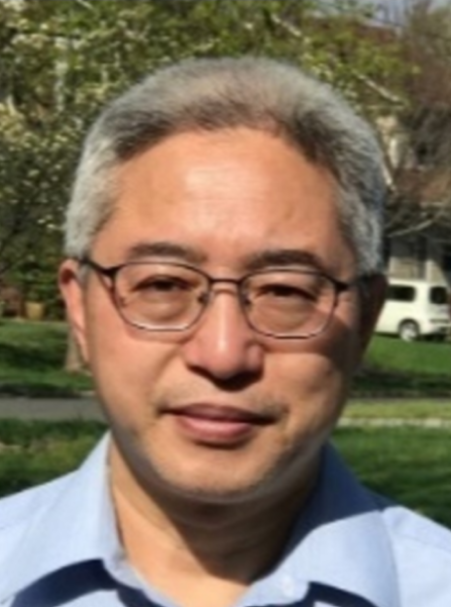Hansong Tang
Professor
Building
Steinman Hall
Office
127
Phone
212-650-8006
Fax
212- 650-6965
Website

Hansong Tang
Profile
Education
- Ph.D., 2001, Environmental Fluid Mechanics, Georgia Inst. Tech.
- D.Sc., 1993, Computational Mathematics, Peking Univ.
- BS 1983, Mechanical/Electric Eng.; MS 1986, Computational Hydrodynamics, Wuhan Univ. of Hydraulic and Electrical Eng.
Courses Taught
Data analysis (CE264)
Fluid mechanics (CE350)
Numerical method and simulation in fluid (CEG9700)
Modeling of surface water quality (CEG7300)
Environmental water resource (CE451)
Analytical methods (H1000)
Research Interests
Environmental Fluid mechanics. Computational physics. Numerical algorithms
Publications
- Z. M. Chen, X. H. Xia, H. S. Tang, S. C. Li, and Y. Deng. “Emergy based ecological assessment of constructed wetland for municipal wastewater treatment: methodology and application to the Beijing Wetland”. Journal of Environmental Informatics. 2010, in press.
- L. Zeng, G. Q. Chen, H. S. Tang, and Z. Wu, “Environmental dispersion in wetland flow”, Comm. Non-linear Sciences & Numerical Simulations, 2010, in press.
- H. S. Tang, T. R. Keen, and Khanbilvardi, “A model-coupling framework for nearshore waves, currents, sediment transport, and seabed morphology”, Comm. Non-linear Sciences & Numerical Simulations, 14(2009), 2935-2947.
- H. S. Tang and T. R. Keen, “Analytical model for temperature response of channel flows with time-dependent thermal discharge and boundary heating”, ASCE J. Hydr. Eng,, 135(2009), 327-339.
- H. S. Tang, J. Paik, F. Sotiropoulos, and T. Khangaokar. “Three-dimensional CFD modeling of thermal discharge from multports”, ASCE J. Hydr. Eng,, 134(2008), 1210-1224.
- H. S. Tang and D. M. Kalyon, “Development of flow instabilities during Tube flow of Concentrated Suspensions with non-colloidal Particles”, J. Rheology, 52(2008), 1069-1090.
- H. S. Tang and D. M. Kalyon, “Unsteady circular tube flow of compressible polymetric liquids subject to pressure-dependent wall slip”, J. Rheology, 52(2008), 507-525. J. Rheology, 52(2008), 1069-1090.
- H. S. Tang and F. Sotiropoulos, “Fractional step artificial compressibility method for Navier-Stokes equations”, Computers & Fluids. 36, 2007, 974-986.
- D. M. Kalyon and H. S. Tang, “Inverse problem solution of squeeze flow for parameters of generalized Newtonian fluid and wall slip”, J. Non-Newtonian Fluid Mech., 143, 2007, 133-140
- H. S. Tang, “Study on a grid interface algorithm for solutions of incompressible Navier-Stokes equations”, Computers & Fluids. 35, 2006, 1372-1383.
- D. M. Kalyon, H. S. Tang, and B. Karuv, “Squeeze flow rheometry for rheological characterization of energetic formulations”, J. Energetic Materials, 24, 2006, 215-222
- Z. K. Zhang, H. S. Tang, “Numerical simulation of vortex flow over delta wing with trailing edge jet at high angle of attack”, Int. J. Numer. Meth. Eng., 59, 2004, 2047-2063
- H. S. Tang and D. M. Kalyon, “Estimation of parameter of Hershel-Bulkley fluid subject to wall slip by combination of squeeze and capillary flow viscometers”, Rheol. Acta, 2004, 43, 80-88
- H. S. Tang, C. Jones, and F. Sotiropoulos, “An overset grid method for 3D unsteady incompressible flows”, J. Comput. Phys., 191, 2003, 567-600
- Z. K. Zhang, H. S. Tang, and J. B. Jia, “Numerical investigation of trailing edge jet effects on flows around delta wing using Navier-Stokes equations, ACTA Aerodynamics Sinica, 18,2000, 484-489
- H. S. Tang and T. Zhou, “On nonconservative algorithms for grid interfaces”, SIAM J. Numer. Anal., 37, 1999, 173-193
- H. S. Tang and F. Sotiropoulos, “A second-order Godunov method for wave problems in coupled solid-water-gas systems”, J. Comput. Phys., 1999, 151, p790-815
- H. S. Tang, “A second-order Godunov scheme for wave and fracture problems in hydro-elesto-plastic body”, Math Numerica Sinica, 21, 1999, 225-236
- H. S. Tang, D. L. Zhang, and C. H. Lee, “Monotonicity preserving CIP schemes for convection equations”, J. Hydrodynamics, ser. A, 12, 1997, 181-187
- H. S. Tang, D. L. Zhang, and C. H. Lee, “Analysis and modification on CIP method for hyperbolic equations”, Comput. Fluid Dyn. J., 6, 1997, 227-236
- H. S. Tang, “Numerical prediction of cavitation phenomenon in water shock tube”, J. Hydrodynamics, ser. A, 12, 1997, 175-180
- H. S. Tang and D. Huang, “A second-order accurate capturing scheme for 1D inviscid flows of gas and water with vacuum zones”, J. Comput. Phys, 128, 1996, 301-318
- H. S. Tang and C. H. Lee, “On consistency of conservative algorithms for internal interfaces in calculations of inviscid flows by zonal method”, Chin. J. Comput. Phys., 13, 1996, p445-453
- H. S. Tang, D. L. Zhang, and C. H. Lee, “Comments on algorithms for grid interfaces in simulating Euler flows”, Comm. Nonlinear Science and Numerical Simulation, 1, 1996, 50-54
- X. S. Xu and H. S. Tang, “A general solution for the Stokes flows around axis-symmetrical body”, Transaction of Changsha Comm. Inst., 9, 1993, 57-63
- X. Lu and H. S. Tang, “A primary study on mathematical modeling of sediment transport in a river section with two patterns”,Transaction of Changsha Comm. Inst., 8, 1992, 69-77
- H. S. Tang, S. C. Wang, Y. Z. Pong, and W. L. Hou, “Experimental study on the regularity of water head loss in unsteady pipe flow”,Transaction of Changsha Comm. Inst., 5, 1989, 95-100
- H. S. Tang, “An upwind method for Navier-Stokes equations”, Transaction of Changsha Comm. Inst., 4, 1988, 73-81
- H. S. Tang, “Finite element analysis of heated jets into shallow waters”, Transaction of Changsha Comm. Inst., 3, 1987, 85-92